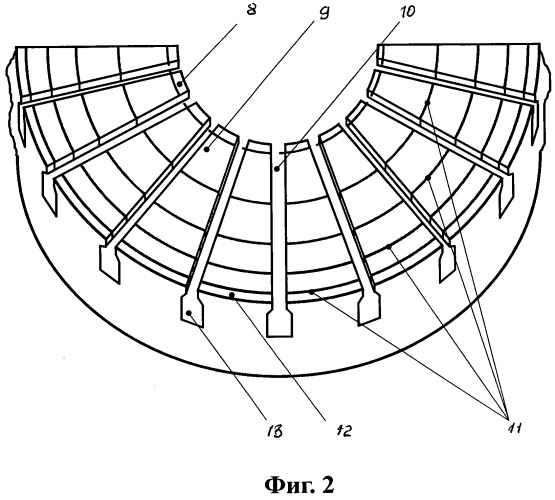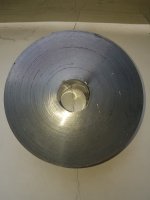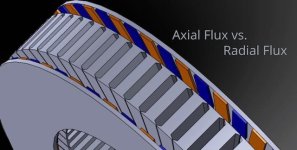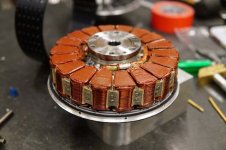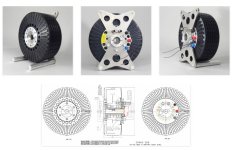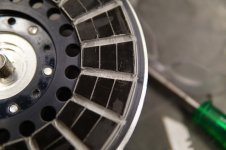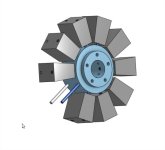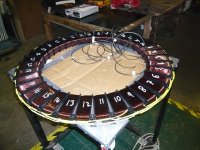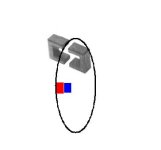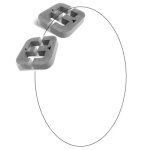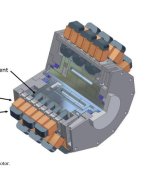It makes since to me to ramp, or cone, the back iron,.. you could keep the top part of the ramp flat, or parallel
with the tooth face, and just tilt the rear, for better windings? (Maybe thats the way it is, and I'm seeing it wrong.)
It's always a good idea to reduce weight, and having room for the bearing inside is a plus, and makes for a stronger
shaft and shorter case.
Problem is,.. machining or shaping lamination material. Man I hate that stuff! What a pain.

I don't know why it would follow any different rules than PM back iron though, which is quite a bit thinner,
except that the PM's are thinner as well. Which begs the question, how thin/short can the stator tooth be
made to be, and still get 1-1.5T flux without saturation?
If I get Lebowski right, in talking about the small end of the wedge, I've often wondered just how much use it
serves as well. That small section of at the bottom of the tooth can't possibly contribute much to the rotation?
I would think that the wedge shape should be more squarish in shape. But then theres a multitude of motors that
use the long and skinny tooth,.. so what do I know.
As said, the purpose of the stator tooth is to guide and compress the PM flux, and coil flux, into a small powerful area.
It also moves the strongest part of the coil 's flux, which is in the 'center' part of the coil, to the outside, or ends, where
it can be made useful.
But what happens with a really thin coreless coil?
I've often wondered if it's possible to make a coreless coil with the same, or close to same, amount of flux as a cored
coil? Say..maybe with a flat wound coil, or a foil core? If it could be made short enough...
(evidently not, or it would have been done by now)

Another thought I had was to roll foil, or ribbon copper, and foil amorphous 'met glass' ribbon, 'together', in layers, to
form a highbred copper metal coil.

(like the inside of a capacitor, with foil and paper)

Just thinking out loud.

(probably shouldn't do that)




